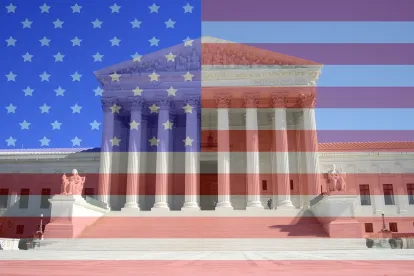Yesterday, the Supreme Court issued two decisions minutes apart related to post-grant proceedings created by the America Invents Act (“AIA”) for challenging patent validity. The first, Oil States, confirmed that such reviews are constitutional. The second, SAS Institute, struck down the USPTO’s discretionary practice of “partial institution” where it reviews less than all challenged claims. This not only maintains the status quo, but arguably expands the scope of post-grant proceedings created by the AIA. The Oil States decision maintains the status quo, will likely have little, if any, effect on current PTAB practice, and will likely maintain the PTAB as the busiest patent tribunal in the country. The SAS Institute decision, however, changes PTAB procedure, raises questions as to retroactive application, and may lead to USPTO rule making to eventually allow partial institutions.
Oil States
In Oil States Energy Services, LLC v. Greene’s Energy Group, LLC, No. 16-712, __ U.S. __ (2018), the Supreme Court held that inter partes review (“IPR”) does not violate Article III of the Constitution or the Seventh Amendment. In a 7-2 decision authored by Justice Thomas, the Court confirmed that the grant of a patent falls within the public-rights doctrine, and that Congress has authority to assign the adjudication of public rights to entities other than Article III courts (e.g., the USPTO).
Justice Thomas framed inter partes reviews ("IPRs") as a “reconsideration” of the Government’s decision to grant patents in the first place, and labelled patents as valuable “public franchises.” Following a significant disagreement between the parties and amici on whether the Government could reverse that determination after a patent issued, the Court held that this “distinction does not make a difference,” drawing parallels to franchises permitting a company to construct a toll bridge, railroads, and telephone lines.
The Court rejected Petitioner Oil State’s private rights and historical arguments. The Court distinguished three Supreme Court decisions from the 1800s recognizing patent rights as private rights because they were decided under the Patent Act of 1870, which did not include any provision for post-issuance administrative review. Petitioner also argued that Congress may not “withdraw from judicial cognizance” any matter subject to common law or equitable lawsuits. However, the Court noted that even in 18th-century England a person could petition the Privy Council to vacate a patent. Finally, the Court finally rejected the argument that IPRs are unconstitutional because they “look like” litigation, explaining that “this Court has never adopted a ‘looks like’ test to determine if an adjudication has improperly occurred outside of an Article III court.”
Justice Thomas went to great effort to emphasize the narrowness of this holding, stating that the decision does not address “the retroactive application of inter partes review,” any “due process challenge,” or suggest “that patents are not property for purposes of the Due Process Clause or the Takings Clause.” He also dismissed the Seventh Amendment challenge as resolved in view of the Article III determination.
Justices Gorsuch and Roberts dissented, arguing that the decision retreats from the promise of judicial independence, and “signals a retreat from Article III’s guarantees.” In a potential preview of their view in other cases, the dissent was concerned about “ensuring that the people of today and tomorrow enjoy no fewer rights against governmental intrusion than those who came before.”
The Oil States decision maintains the status quo for post-grant patent challenges under the AIA. Cases that were previously stayed in view of Oil States can now move forward with certainty. The majority opinion also allows for possible future constitutional challenges to AIA proceedings that were expressly excluded from the scope of the opinion.
SAS Institute
In SAS Institute, Inc. v. Iancu, No. 16-969, ___ U.S. ___ (2018), the Supreme Court held that the USPTO must decide the patentability of all challenged claims during an IPR. In a 5-4 decision authored by Justice Gorsuch and issued just minutes after Oil States, the Court struck down the PTAB’s power of “partial institution” codified at 37 C.F.R. § 42.108(a) allowing the Director to institute review of some petitioned claims but not others.
The Court held that the plain language of 35 U.S.C. § 318(a) resolved the case. 35 U.S.C. § 318(a) states in relevant part: “the Patent Trial and Appeal Board shall issue a final written decision with respect to the patentability of any patent claim challenged by the petitioner” (emphasis added). The Court reasoned that “any” means “every” patent claim, and thus, the USPTO must (“shall”) issue a final written decision addressing every challenged patent claim. The PTAB cannot pick and choose a subset of challenged claims for inter partes review since it leads to a final written decision addressing less than “every” patent claim. In this case, the PTAB’s institution decision and final written decision only addressed nine of the sixteen claims SAS Institute challenged in its IPR petition.
The plain language of 35 U.S.C. § 318(a) trumped 37 C.F.R. § 42.108(a), which states: “When instituting inter partes review, the Board may authorize the review to proceed on all or some of the challenged claims and on all or some of the grounds of unpatentability asserted for each claim” (emphasis added).
Justice Gorsuch addressed the USPTO’s arguments. First, the Director’s claimed “partial institution” power appears nowhere in the statute. The IPR structure mimics the civil litigation system in that the petitioner is “master of its complaint” and entitled to judgment on all claims it raises, “not just those the decisionmaker might wish to address.” In essence, the petitioner defines the contours of the IPR, not the Director. If Congress intended to give the Director discretion, it could have mirrored the statutory structure for Office-initiated ex parte reexamination. Second, § 314(a) gives the Director discretion on whether to institute the IPR, but not what claims the review will encompass. Third, any textual discrepancies between Sections 314 (institution) and 318 (final written decision) are attributable to the statutory winnowing mechanism that allows the patent owner to voluntarily cancel challenged claims. Fourth, any policy arguments regarding judicial efficiency are better directed to Congress.
The SAS Institute decision will almost certainly result in new rulemaking from the USPTO, at the very least with respect to Rule 42.108(a). It also raises a number of questions regarding its application to existing and future IPR proceedings:
|
|
Whether SAS Institute will have a retroactive effect on pending PTAB proceedings (and appeals thereof) involving partial institution decisions. In the short term, the PTAB will almost certainly receive requests from IPR petitioners seeking a revised institution decision addressing all challenged claims. However, some petitioners may wish to preserve challenges to non-instituted claims for a parallel proceeding, likely planning to argue that estoppel under § 315(e) only applies to claims addressed in “a final written decision.” On the flip side, patent owners may request a complete institution decision in the hope that a favorable final written decision will estop the petitioner from challenging the same claims in a parallel proceeding on grounds that the petitioner “raised or reasonably could have raised” during the IPR. |
||
|
|
Whether the PTAB must now address all grounds in a petition containing multiple grounds challenging a given claim. Section 318(a) is silent on the topic, and Rule 42.108(a) gives the PTAB discretion to institute IPR on “some or all” grounds. The PTAB routinely denies institution of one or more grounds as redundant of other instituted grounds, and the Federal Circuit has upheld such practice. See e.g., Shaw Indus. Group, Inc. v. Automated Creel Systems, Inc., 817 F.3d 1293 (Fed. Cir. 2016). | ||
|
|
Whether SAS causes the USPTO to reconsider the level of detail presented in an institution decision. Presently, institution decisions are generally comprehensive and explain the basis for institution (or non-institution) of each challenged claim. The USPTO may opt to retain this detailed analysis, institute trial on all challenged claims, but note that there is not a reasonable likelihood of success for the “weak” challenges which the PTAB would have denied institution pre-SAS. The validity of those claims would be addressed in the final written decision under § 318(a) in compliance with SAS. Alternatively, the PTAB may decide to keep institution decisions short, stating only that the petition has a reasonable likelihood of success on at least one challenged claim, and leave the substantive evaluation until the final written decision. | ||
|
|
Whether Congress will revise the statute to clarify or revise AIA post-grant proceedings. The PTAB has long justified the practice of partial institution on the basis of efficiency and cost savings. The USPTO may push hard for statutory revisions to preserve the procedural option of partial institution valued by the PTAB. |
SAS is sure to be an active issue in the coming months as PTAB litigants consider all of their options both retroactively and moving forward.





 />i
/>i

